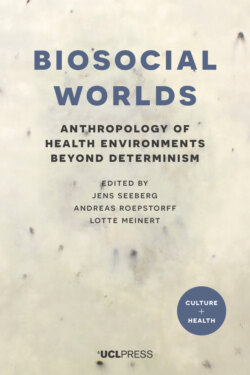Читать книгу Biosocial Worlds - Группа авторов - Страница 22
На сайте Литреса книга снята с продажи.
The embodiment of trauma
ОглавлениеAn article published in the mid-1990s by the epigeneticist Michael Meaney and colleagues has become iconic in the field of epigenetics. This research made use of a model of maternal deprivation created in rats by removing young pups from their mothers shortly after birth, thus terminating maternal licking and grooming crucial to their development. The deprivation altered the expression of genes that regulate behavioural and endocrine responses to stress, and hence, indirectly, hippocampal synaptic development (Meaney et al. 1996). It was found that these changes could be reversed if pups were returned in a matter of days to their mothers.
Furthermore, when the birth mother was a poor nurturer, placement of her deprived pups with a surrogate mother who licks and grooms them enabled the pups to flourish. Crucially, it was shown that pups or foster pups left to mature with low-licking mothers not only exhibited a chronically increased stress response but also passed on to their own pups this heightened sensitivity to stress. Hence, variation in maternal behaviour results in biological pathways causing significantly different infant phenotypes that can persist into adulthood, and are potentially transmitted to the next generation.
A sizeable body of work based largely on animal models, but increasingly in humans, substantiates these findings and broadens their significance. Since the 1990s, a literature has accrued showing a strong relationship between ‘childhood maltreatment’ and negative mental health outcomes ranging from aggressive and violent behaviour to suicide. Current investigations are gradually exposing how the ‘biological embedding’ of childhood maltreatment comes about (Jaffee and Christian 2014). The overall conclusion drawn from this research is that the ‘epigenome is responsive to developmental, physiological and environmental cues’ that bring about so-called ‘epigenetic marks’.
In 2011 Moshe Szyf titled a presentation he gave at a Montreal gathering ‘DNA methylation: A molecular link between nurture and nature’. At the time this talk was given, evidence for such a link had accrued primarily from animal research and from one human study based on a sample of 25 individuals who had suffered severe abuse as children and later committed suicide. At autopsy, the donated brains of these individuals showed a significantly different pattern of DNA methylation than did those of a control group of 16 ‘normal’ individuals. A second control group of 20 individuals who had committed suicide but where no known abuse had taken place was also included in the study. The findings are presumed to substantiate a mechanism whereby nature and nurture meld as one. In this particular case, childhood adversity is associated with sustained modifications in DNA methylation across the genome, among which are epigenetic alterations in hippocampal neurons that may well interfere with processes of neuroplasticity (McGowan et al. 2009).
The researchers acknowledge that the sample was small, and that the study cannot be validated. The absence of a control group that experienced early life abuse and did not die by suicide is another shortcoming. Furthermore, the abuse that the subjects experienced was exceptionally severe. Szyf and colleagues readily agree that understanding of these processes remains rudimentary. Even so, given that epigenetic markers have been shown to play important roles in learning and memory that may be transmitted intergenerationally, these findings suggest how the effects of trauma associated with events such as colonisation, slavery, war, displacement, abuse and neglect may be transmitted through time. It is also the case that they bring about insights into resilience in connection with such events (Hughes 2012).
In the remainder of this chapter, I discuss the epigenetic effects brought about by the impact of stress, malnutrition, environmental toxins and social isolation on human wellbeing. Certain populations and individuals are of course more pervasively exposed to such variables than are others. The concept of local biologies posits that the material body is everywhere inseparably entangled with specific historical, economic and socio/political variables that are deeply implicated in bringing about epigenetic changes in individual bodies. However, it is also evident, given the extent of human migration today, voluntary or forced, that local biologies must be subsumed under broader, inclusive concepts of ‘situated’ and/or ‘emerging’ biologies and that epigenetic changes can be widely distributed across vast swaths of people.
